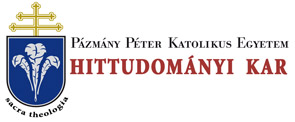Folia Theologica et Canonica 11. 33/25 (2022)
Recensions
RECENSIONS 255 ry of institutions, are taught explicitly on the basis of this threefold division. While the history of science is also used to illustrate the canon law application and contemporary interpretation of certain periods of the two fields. The three disciplines of canon law history listed above have their own independent and substantial international literature, ranging from classical works of considerable length to shorter and summarized works. These include Histoire du droit et des institutions de I’Eglise en Occident (Le Bras, G. - Gudemet, J., Paris 1955Í1); Geschichte des Kirchenrechts, I-V (Plöchl, W. M., Wien - München 1960—1970.2); Historia iuris canonici latini (Institutiones academicae. Historia dontium I; Stickler, A. M., Roma 1950). Among contemporary overviews, two works by Card. Péter Erdő should be mentioned in particular: Storia della scienza del diritto canonico. Una introduzione (Roma 1999), and Storia déllé fonti del diritto canonico (Istituto di Diritto Canonico San Pio X, Manualia 2; Venezia 2008). In addition to the parallel treatment of the three separate disciplines of canon law history, which are closely related but nevertheless based on different perspectives, there are several monographs and handbooks which treat canon law history as a whole. The best examples are the one-volume works by Jean Gaudemet (Eglise et cité. Histoire du droit canonique, Paris 1994) and James A. Brundage (Medieval Canon Law, London 1995). Having said all this, the specificity of the handbook on the history of canon law written by Nicolás Álvarez de las Asturias and Joaquin Sedano is clear. On the one hand, the authors treat the history of canon law as a harmonious unity. On the other hand, however, the title of the volume itself expresses the three disciplines of the history of canon law (sources, science, institutions) already mentioned above, which are also reflected in the way the contents are divided up. Nicolás Álvarez de las Asturias, Professor of Canon Law History at the Universidad San Dámaso (Madrid) and currently Vice-Rector for International Relations at his University, is a well-known name in the field of the history of canon law, particularly in the history of sources. He has published numerous studies, individual and collective volumes. Among these I refer here only to La Reforma Gregoriana en Espaha (ed. Megaz, J. M. - Álvarez de las Asturias, N., Madrid 2011) and Becoming a Priest. Canonical Discipline and Criteria on Suitability for Candidates (Szuromi, Sz. A. — Álvarez de las Asturias, N., Berlin 2019). Joaquin Sedano, co-author, is another of the young generation of outstanding canon law historians, who has drawn attention to himself mainly for his comprehensive analyses of the Decretum Gratiani. He is currently Professor of Canon Law History at the Universidad de Navarra (Pamplona), where he is also Dean of the Faculty of Canon Law. He has earned indefensible merits as co-editor of the Diccionario General de Derecho Canónico (Pamplona 2012). They both are prominent and active members of II diritto canonico nella storia: studio e ricerca suile fonti (Venice) and
